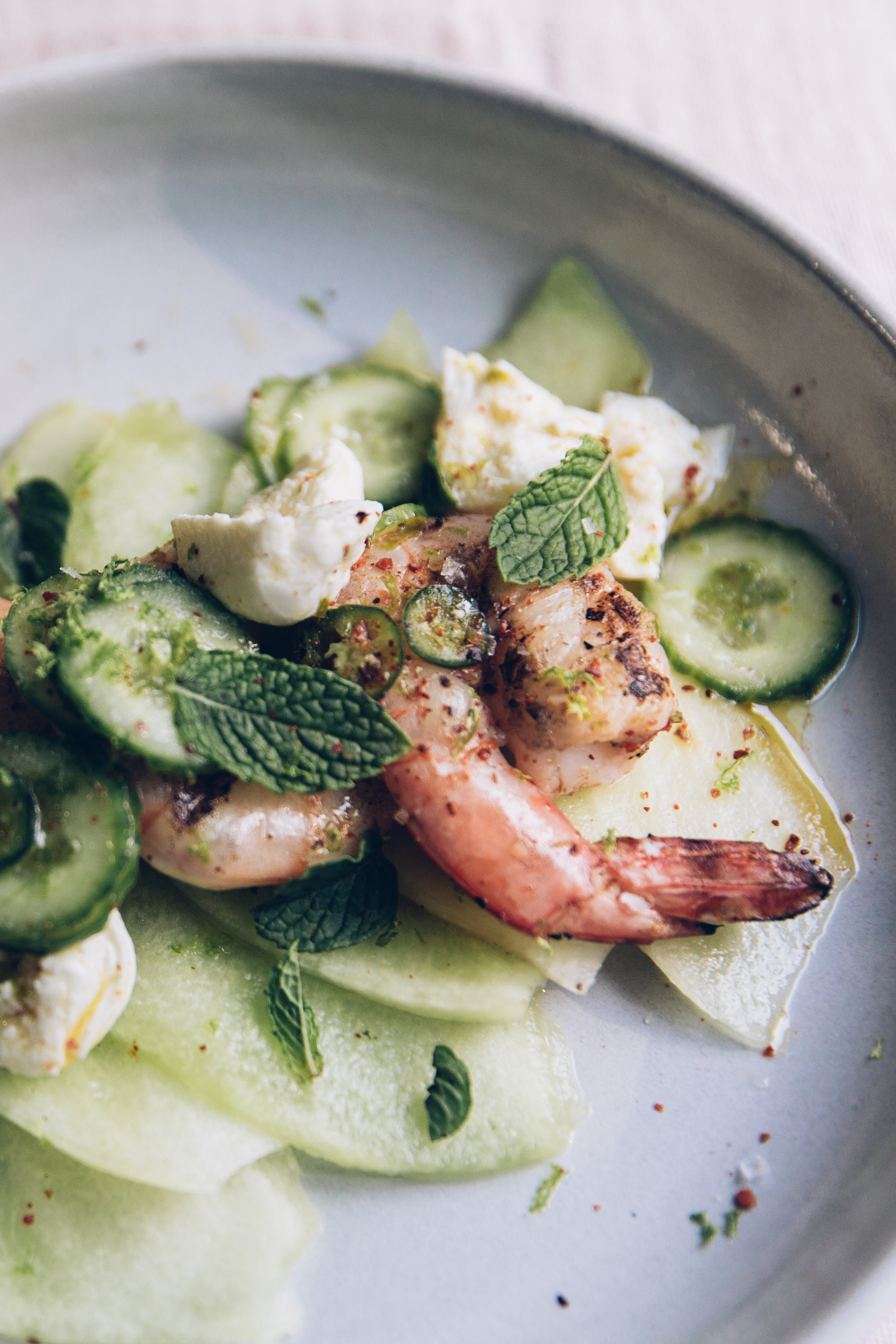There’s a special pleasure to be had in doing a simple thing well. In taking the time to do it slowly and properly then standing back to admire your work.
The sort of things I’m thinking of have an old-fashioned, almost Victorian air about them: making a bed with crisp hospital corners. Polishing a tray of silver until it sings. Mowing the lawn into bright green zig zags.
I am a lover of all these sorts of tasks--shelling peas, ironing laundry, organizing books on a shelf. This might be because my personality veers towards the OCD end of the spectrum. Or it might be because these sort of activities pull me away from the constant pinging of my phone and the flashing notifications on my computer screen and my general hurried busy-ness. They allow me to concentrate fully on what’s in front of me, which feels like a small luxury these days.
One such task I would place on this list is cooking a perfect pot of beans.
Given the current fascination with foods like bee pollen, dragon fruit, active charcoal and cashew milk, beans don’t exactly sound like the sexiest of ingredients. But I have a hunch this is due largely to the fact that many (most?) people don’t know how to cook dry beans properly.
(Don’t worry--I’m not going to go on a rant about how you should become an urban homesteader and start making everything from scratch. I appreciate the convenience of popping open a can of beans on a Tuesday night.)
That said, a warm bowl of freshly cooked beans tossed with olive oil, salt and a splash of lemon juice--maybe a handful of herbs if we’re feeling fancy--is a very fine thing. Forget the bland mushiness of canned beans. Home-cooked beans have a firm skin, silky interior and their own distinct flavors. Bonus points: they're cheap and super healthy. All of which is why I want you to give cooking your own beans a try.
If you haven’t had luck with cooking your own beans or have forgotten how easy it can be, I've got a step-by-step guide for you below on how to prepare perfectly flavorful and not-even-a-little-bit-mushy beans every time.
And when you've cooked up your perfect pot of beans, don't forget to sit back and savor a job well done.
XO,
Olaiya
How to Cook a Perfect Pot of Beans
1. Buy good beans. Beans might be a humble ingredient, but buying quality pays off in the pot. The sort of beans you get in a 2-lb. bag at a large chain grocery store might have been harvested as much as 5 (!!!) years ago. Which means they will be less flavorful and won't cook as evenly. As with most things, fresher is better. You want beans that were harvested this year or last (depending on the time of year). How do you know you're getting fresh beans? But them from someone who specializes in (and loves) beans! My two favorite sources are Zursun Heirloom Beans and Rancho Gordo. Both of these growers specialize in bringing a variety of heirloom beans to a wider audience. If you haven't tried these beans before, they will change your life.
2. Soak your beans. I know there are all sorts of tips and tricks floating around on the internet for cooking your beans without soaking them. And I'm sure lots of those work in a pinch. But for tender, evenly cooked beans that don't fall apart or get mushy, I've found that the only way to go is an overnight soak. You want to hit at least 6 hours. For denser beans (like chickpeas) and larger beans (like corona beans or gigantes) I aim for a 24-hour soak (or as close as I can get) to make sure they're fully and evenly hydrated before cooking.
How to: Place your dried beans in a large bowl and cover them with cold water. Your beans will usually double in size as they soak, so make sure you cover them with enough water to allow them to expand. If your kitchen is hot or if you're soaking for longer than 8 hours, place the beans in the fridge to hydrate.
3. Drain your beans before cooking. Unless, of course, you love to fart. Beans contain carbohydrates called oligosaccharides, which are poorly absorbed in the stomach and then rapidly fermented by bacteria in the large intestine, causing gas. Some of these oligosaccharides are released into the water as beans soak. So pouring off that water reduces the amount of pesky oligosaccharides hanging out ready to ruin your next date or team meeting. I have been doing this for years and beans almost never give me any sort of gut problems.
How to: Drain your soaked beans in a colander and rinse them under cold running water for 15-30 seconds.
4. Season your cooking water well. It hurts my soul when I see someone chuck a bunch of soaked beans into a pot with nothing else but water and start cooking them. Like any other ingredient, beans need a little help to release their full flavor. I usually season my beans with olive oil, a ton of garlic, a couple bay leaves and often a chile of some sort. And salt. DO NOT FORGET THE SALT. You don't want to salt the water as heavily as you would for pasta or green vegetables because the beans soak up a lot more water than the former and will get too salty if you do. I salt my water until it tastes just a tiny bit briny. You want to taste that salt is present, but you don't want the water to taste noticeably salty.
How to: Place your soaked, rinsed beans in a large heavy-bottomed stock pot or Dutch oven. Add enough water so that the beans are covered by 2-3 inches. Salt the water as instructed above. Add lots of garlic--at least 4 cloves. I usually use 6 to 8. No need to chop them, just smash them with the side of a large knife, remove the skins and toss them in. Add a nice glug of olive oil, 2 bay leaves and a dried chile if you want to. I like árbol chiles.
Variations: Use more garlic or less. If you are making Mexican beans, you can sub avocado leaves for the bay and add a cinnamon stick and a smokier chile (this is especially good with black beans). Or you can add a bundle of cilantro stems along with the bay, garlic and chile. If you want Greek flavors, sub in a few stems of dried oregano. For French flavors, use thyme or a bouquet garni. For Italian flavors, rosemary. (If you're using fresh herbs, I recommend tying them in cheesecloth, so they don't disintegrate into little black flecks in your beans.) Add large strips of orange or lemon zest cut with a vegetable peeler. The options are almost limitless.
5. Cook your beans gently. Beans cooked at a rolling boil, bounce around which breaks their skins causing them to get mushy. To get whole, tender beans, cook them at a simmer.
How to: Bring your beans and seasoned water to a boil over high heat, reduce the heat to medium-low. Skim any foam that forms on the surface of the water and discard. Cover and cook until the beans are done, adjusting the heat to keep the water at a bare, bare simmer.
6. Use a pressure cooker (optional). My mother-in-law gave me this pressure cooker several Christmases ago and I LOVE it. I'm thinking an Instant Pot would work just as well if you've got one of those. Pressure cooking makes the very best beans in my opinion. The only caveat is that the cook times listed in the manual are often for commercial beans and are too long for heirloom beans which are generally fresher and cook more quickly. When I'm trying a new bean I haven't cooked before, I take 2-3 minutes off the listed cook time. If the beans aren't done, I just put the pot back on the stove and finish the beans without the lid.
7. Cook your beans longer than you think. This one is counter intuitive since we don't want our beans to be mushy. But beans will firm up a little bit as they sit. So I always cook my beans just a bit past the firmness I'm looking for. The key is to LET YOUR BEANS COOL IN THEIR COOKING WATER. If you turn them into a colander, they will smash each other and all your careful bean-cooking effort will be wasted.
How to: Once your beans are just slightly past the doneness you want, slide the whole pot to a burner that's not in use or a cooling rack and let the beans cool to room temperature before you spoon or ladle them to storage containers (never pour). If you need them sooner, use a slotted spoon to carefully lift them out of their cooking water.
8. Store them properly. Store your beans in a covered container in the fridge. Beans keep longer if you store them in their cooking water. I find they keep up to a week that way. You can also freeze them. Place them in a freezer-proof container, cover them with their cooking water and be sure to leave headspace at the top of the jar so the liquid can expand as it freezes. Thaw in the fridge overnight. And hold onto that cooking water! It's like gold in the kitchen. You can freeze it and use it as you would vegetable or chicken stock. It's super flavorful and it's basically free.
9. Eat your delicious beans. In case you need some ideas for what to do with your delicious home cooked beans, here are some recipes from the blog:
huevos rancheros with black beans and salsa verde
roast leg of lamb with cilantro-pistachio pesto and white bean puree
smoky tomato broth with masa dumplings and black beans
lemony parsnip and white bean soup
Feel free to reach out in the comments below if you have any questions or tips to add to this list!



























